There are a lot of uncertainties in the world right now due to coronavirus. Lockdowns have been placed on at least 20% of the global population, which has changed people’s lives very quickly (myself included). Everyone has some big questions on their minds: How bad will it get for my family, my business, my country, and the world? While many of us are stuck at home, let’s keep in mind that we’re all in the battle against the virus together. There’s a lot we can do in the meantime to prepare our plugin and theme businesses to be more successful on the other side, starting with looking at data to forecast where we might be in the next few months.
While some companies are growing and hiring, others are struggling to adapt to the changing situation and declining rapidly. Through all this, we’ve seen global internet usage spike 10-20% because of the increase in people staying at home.
All these factors come together to impact WordPress developers differently, but one of the biggest indicators for WordPress as a whole – and specifically for plugin and theme devs – includes data on downloads, active installs, and new sales.
Good ol’ Google Trends
To set the context, let’s start with Google Trends data for the popularity in searches for the term “coronavirus” in Q1 2020:
By the time March rolled around, the world was on high alert and forced quarantines and lockdowns were in full swing, so it’s expected that searches would surge.
With this backdrop, let’s check the change in popularity for searches of “WordPress” in Q1 for each of the last 3 years. Unfortunately, Google Trends doesn’t allow overlaying data from different years, so I’ve put it together in the chart below, normalized over 3 years:

In both 2018 and 2019, Google Trends showed that the popularity for the term “WordPress” decreased by around 1.4% from February to March in both years.
However, from February to March 2020, popularity increased by around 1.2%, a difference of almost 2% in from the previous years.
Although WordPress’ search popularity has been declining consistently from its peak in 2014, there has been consistent growth in Q1 2020 so far.
As the aphorism goes, correlation is not causation, and given the fact that so many more people are stuck at home looking for ways to work online, the present situation aligns with the story the data is telling.
Free Plugins: Download & Install Data from WordPress.org
If the demand for WordPress projects is changing, there should be some change in the number of plugin downloads on the repository too.
I got in touch with Gordan from WP Repo Alerts (one of our makers at Freemius) and asked if he would be willing to share some of the WordPress.org API data they’ve been collecting for the last 5 years.
The chart below shows Year-over-Year (YoY) free plugin downloads for January, February, and March of 2019 and 2020.

These numbers are interesting because they indicate a few things.
Mainly, there is significant YoY growth for March 2020, which isn’t too uncommon for the WordPress.org repository because new releases of core often mean a jump in new downloads.
The table below shows the YoY growth rates for the last 12 months, with values in parenthesis indicating major releases of WordPress core.

It just so happens that version 5.4 (an update with some great improvements for blocks) was released last month (March 2020), but only on the last day of the month, so it should not have affected downloads of free plugins as much as previous releases that were released earlier in the month, leaving more time for users to update.
Checking month-over-month (MoM) growth will help determine if March 2020 is an anomaly because it lets us see if the short-term cycles repeat themselves over time and how much of an impact each update had in each month:

From February to March 2019, growth was only 2.14%, but from February to March 2020 there was 19.8% growth in plugin downloads – a difference of 17.66% from the previous year.
There was a 19.84% growth in plugin downloads on the WordPress.org repository from February to March 2020!
The jump doesn’t appear to be too strange given the fact that the new release happened on the last day of the month, but it seems likely that it is more than just the new release that led to the jump in free downloads in March.
Although this analysis is inconclusive because we can’t directly associate coronavirus as the cause of the increase in popularity of searches for “WordPress” and increase in downloads on the repo, all of these data points are coming together at a fitting time.
New Seller Registrations
Before getting into paid plugin sales, let’s check into how seller registrations are doing at Freemius, which can give us a feel of the market because it shows how attractive it currently is for developers to work on their own subscription-based plugin or theme business.
We saw a significant spike in new sellers registrations in February and then a bit of a dip in March. We didn’t engage in any new advertising or marketing campaign in February, so this was a market based change.
Basically, a lot of new developers joined Freemius in February, and more in March, which we’re quite happy about 😁 and it shows that making money from selling plugins and themes continues to be an extremely compelling opportunity.
It is still a bit early to say, but we think that the boost is coming from developers that already have a free product on the market and now have more time to work on a paid offering as an additional revenue stream while being stuck in lockdown.

Paid Plugins: New Sales
After analyzing the sales performance of a subset of 100+ paid plugins selling through Freemius, I found that the story gets even more interesting.
This chart compares YoY growth in new sales of paid plugins for January, February, and March. Sales increased from February to March in both 2019 and 2020, but at a slower rate in 2020.
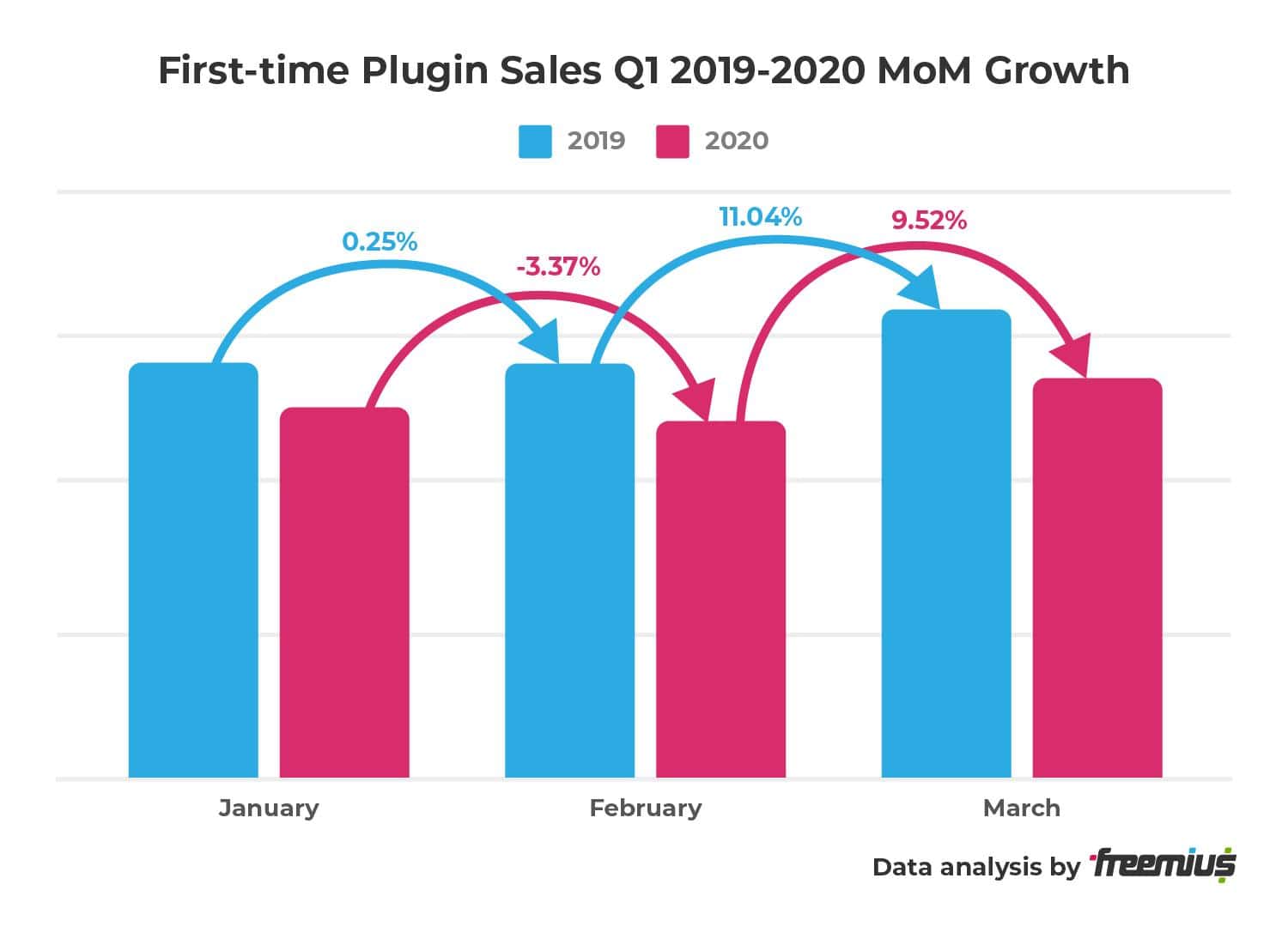
Keep in mind that this chart only shows first-time paid plugin sales and does not include subscription renewals. Subscription renewals make a big difference in maintaining revenue when you have a decrease in new sales, but we’ll get more into that later.
The main takeaway from this chart is that although average total sales in Q1 2020 did not keep up with average sales in Q1 2019 for plugin businesses, there was still a MoM increase in sales from February to March 2020, so we’ll need to check back again after April to see if that growth continues.
Refunds
Given the fact that we saw continued growth in sales, it’s expected that there would be an increase in the number of refunds, so don’t let this next chart confuse you.
The main thing to notice here is the relative growth in refunds Month-over-Month. If that growth is faster from February to March 2020 than it was in 2019, we know something is negatively affecting refunds (meaning more refunds in 2020) compared to 2019.
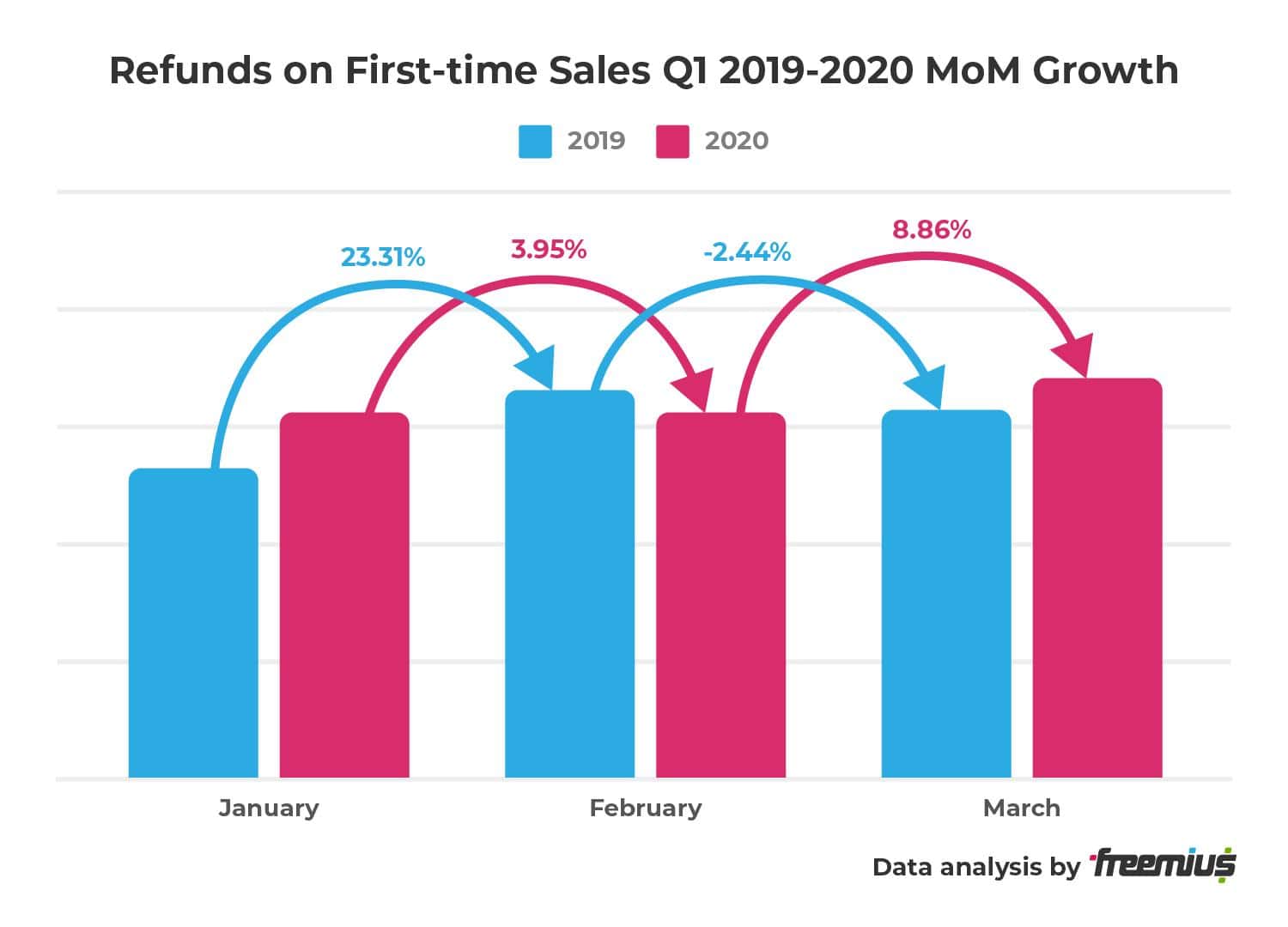
It seems the growth was faster in 2020, but not as fast as sales growth in the same period (February to March, where we had 9.52% growth in sales vs 8.86% growth in refunds). Of course, there is a delay between new sales and when a refund will take place, so we might see a “catch-up” in refunds in April.
The more important numbers could be those January to February 2020, where we saw a -3.37% decrease in new sales and 3.95% increase in refunds, however, these numbers aren’t too far of from normal, and it’s difficult to discern long-term trends from that comparison because both data points are relatively independent of each other on a month to month basis.
In conclusion, we would need a lot more data (refunds that haven’t happened yet) to confirm if this refunds growth rate is out of the norm.
Renewal Refunds
Another important indicator is renewal refunds. Are customers cutting back on existing projects that have renewing subscriptions for plugins?
We only saw a minor change in renewal refunds from February to March as compared with last year, which is a testament to the fact that subscriptions are such a strong source of sustainable revenue even in economic downturns.
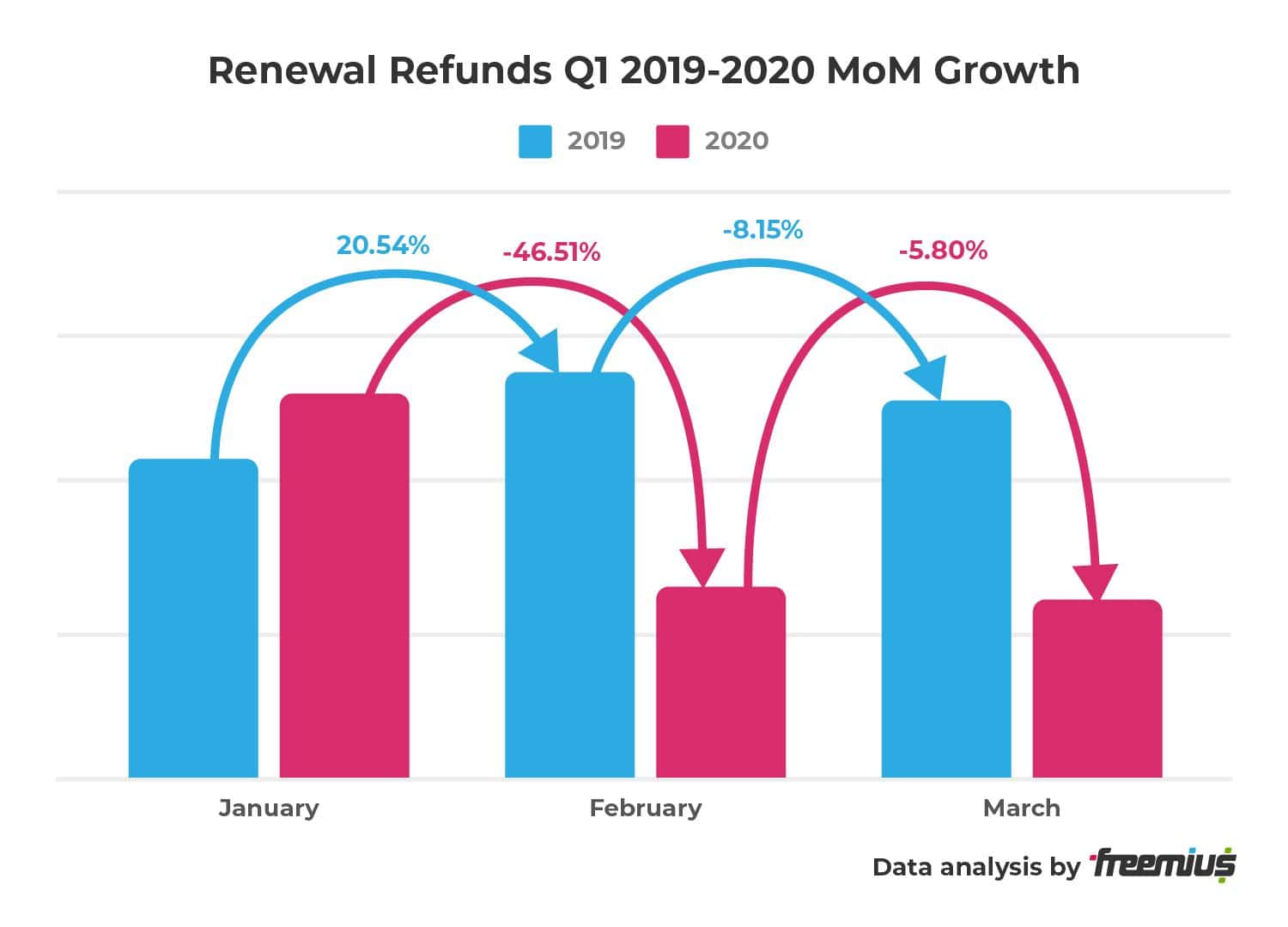
First-time Sale Refunds vs Renewal Refunds
In March, we saw the proportion of First-time sale refunds increase to more than 60% of all refunds that month. This could indicate that new projects were scaled back or put on hold, and that existing projects weren’t affected as much – but, we’ll need to see if that trend continues in April.

Comparing Free Downloads & New Sales
Comparing 2019-2020 YoY growth of free plugin downloads vs paid plugin sales for January, February, and March, it’s clear to see a widening gap.
Free plugins became much more popular in March of 2020 and paid plugins significantly less popular, as compared to the year before. This long-term comparison helps us keep things in perspective.
While new sales decreased in Q1 2020 as compared to Q1 2019, the data wouldn’t be complete without looking at MoM growth.
From February to March 2020, there was slightly weaker growth in plugin sales than from February to March 2019. However, growth in March 2020 was still strong at around 9.5%, indicating that customers are not afraid to buy plugins or themes, but might be holding back a bit more compared to this time in 2019.
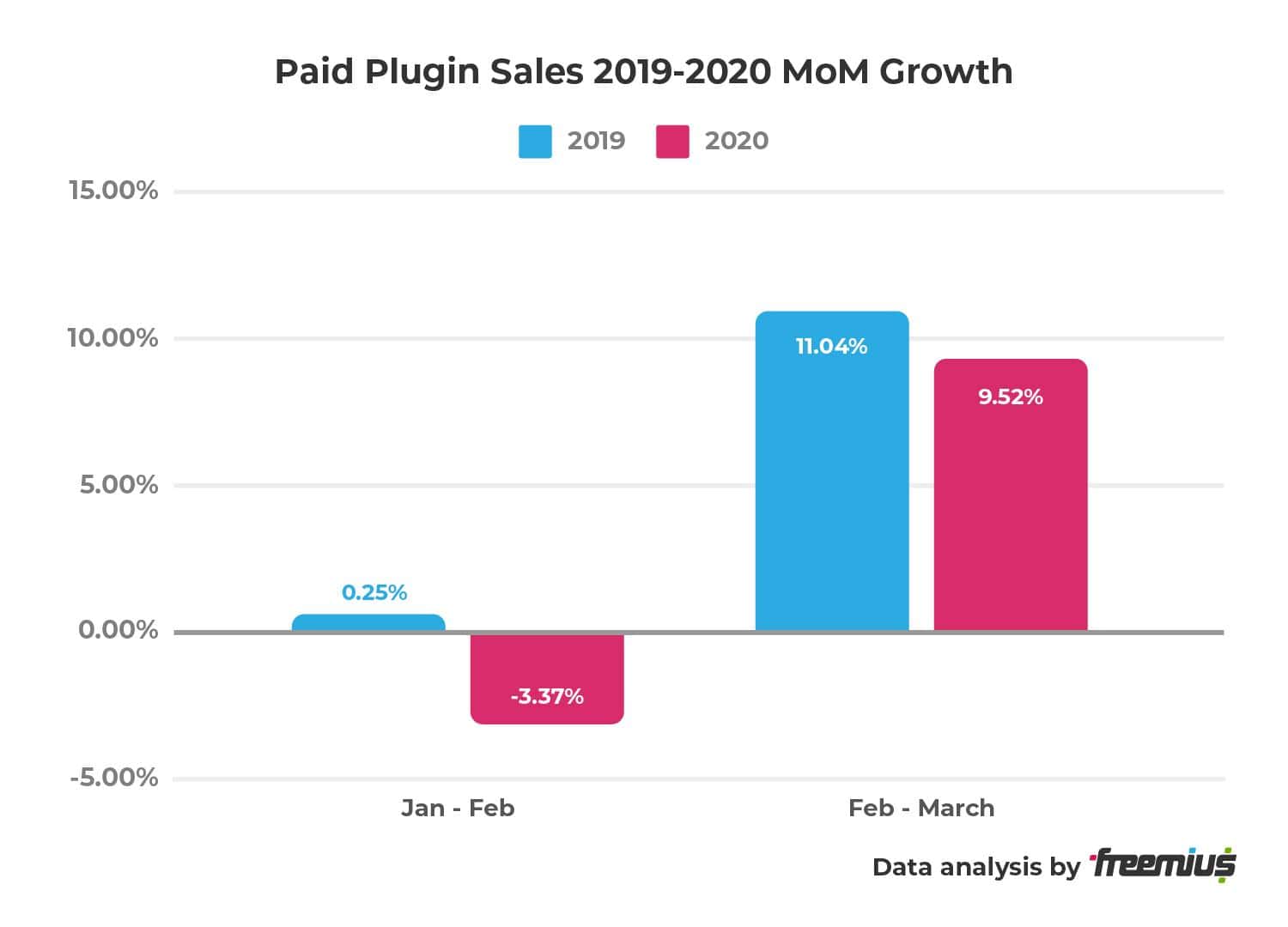
To add further context, January and February are usually slow months for plugin sales anyway, so I’m not considering those numbers as strongly in this analysis.
Interpretations of the Data
Reluctant Customers
One interpretation of this data is that plugin customers are slightly more hesitant to make new purchases than last year, but very eager to take advantage of free offerings available, which makes sense given the uncertain economic environment.
Web developers working with clients in industries of all kinds might be unsure of their next project payments and may be putting off purchases of new plugins until the future is more certain. Alike, anybody working on paid projects that have been put on hold would have also delayed purchases of new plugins.
Excited Sellers
Since so many folks are at home, it makes sense we would find a spike in new seller registrations in February and March. People are looking for a sustainable means of income and ways to optimize their existing plugin or theme businesses. Freemius fits perfectly into both of those goals.
Continued Downturn in Sales Growth
One possibility is that sales growth for paid plugins will continue to slow for some time, but that doesn’t mean long-term negative growth for plugin and theme businesses.
Even if it turned out that new sales declined for a while, subscription-first businesses are much more prepared to weather a storm like this.
Each Vertical is Affected Differently
Based on the internal analysis we’ve run, we can share that some verticals are affected more than others. For instance, travel & hospitality-related plugins are suffering, as compared to eCommerce related products that tend to be performing far better.
Here’s some of the sales data we’ve seen so far based on different verticals:

Recommendations
Capitalizing on the “Free” Trend
It may be a good time to release or promote free plugins in order to build your user base. While it might be a hard time to make sales, free users still offer a massive amount of value down the road.
“Coronavirus discounts”
I couldn’t believe it, but the other day I saw the coupon code “COVID19″. I guess it’s not too much of a surprise, though. This is 2020, the age of the internet, and coronavirus is causing a lot of economic hardship for people around the world, so discounts are needed. I’m not quite as surprised that businesses are offering a discount now – but mainly that the coupon code actually said COVID19.
I’ve seen some pretty big discounts recently – up to 90% off or more. Many companies have also made adjustments to their pricing to increase capacity for existing users or increase appeal to potential customers.
While giving discounts is a nice thing to do right now because a lot of businesses are hit hard by lockdowns, the sustainability of your business matters too, so there’s a balance to be found.
These massive discounts can have an irreparable impact on revenue, and offering them may be an overreaction given all the unknowns. Since every industry is facing this challenge differently, why should customers from industries that are struggling the least (or not struggling at all) get any kind of discount? Discounts should be directed at the businesses or individuals that really need it.
While we don’t yet have enough data to see significant results around how recently activated discounts have impacted revenue, my advice on offering discounts during this time is threefold.
Limit the Scope of your Discounts
First, limit your discounts to businesses that actually need the help. Instead of simply offering the discount to everyone, you can request some kind of justification as to how they’re impacted by coronavirus. If you require customers to contact you and share this information, it still shows that you care about the situation and you also get the opportunity to build a personal relationship, which builds their loyalty.
If you can show the customer that you’re there for them during bad times, it means you will probably be there for them in good times too, right? This way, you’re not only protecting your bottom line, but you’re helping out those that need it most.
If you still want to offer a discount to everyone who comes to your site because you want to maintain sales, it would be good to consider how impacted your target market is by the coronavirus. If your product targets industries that are seeing an increase in growth, then you have no need for a store-wide discount. Otherwise, if most of your customers are in industries that are getting hit hard, then store-wide discounts make more sense.
Discounting Renewals
My second piece of advice regarding “coronavirus discounts” has to do with the fact that this is a temporary global issue. There will be a recovery – even if it’s a long one – so if you do decide to offer a discount, it’s probably not necessary to discount renewals too, as the economic recovery will probably be happening already by the time an annual renewal comes around. In the case of a monthly renewal discount, it might make more sense.
While an annual renewal discount might seem like a good way to entice users for the long-term, it rarely has the intended effect and often needlessly decreases your long-term revenue.
If you discount renewals, it also makes it harder to justify offering discounts during hard times like this too (or during any other time of the year).
Discount the Right Amount
You don’t have to offer a massive discount. Nicholas Lecoq told me that OceanWP has been offering 20% off since April 1, and a decline in growth of new subscribers in March was reversed completely in the first 9 days of April due to the coupon sales.
Offering a coupon to everyone has worked really well for them, but it’s not a huge amount and renewals are not being discounted. He also mentioned their Customer Lifetime Value (LTV) has decreased only .8% since offering the coupon, which is minimal considering that all lost revenue from March has been recovered.
The Importance of Subscriptions
It’s well known that subscription-based businesses are much more resilient to economic changes than non-subscription businesses. This is exactly why we advise Freemius selling makers to run subscription-first businesses, which literally can transform developers’ lives.
Subscribe and grab a free copy of our WordPress Plugin Business Book
Exactly how to create a prosperous WordPress plugin business in the subscription economy.

Freemius acts like an engine for your plugin or theme business, constantly working to close your sales on your behalf. One example is our Dunning mechanism that recovers credit card details to ensure renewals are coming in. These types of tools, that maintain sales for recurring subscriptions, allow businesses to sustain themselves through times like this.
While free products are popular now, it’s a good time to consider how to monetize with recurring subscriptions, and Freemius can get you there in no-time with our 5-min SDK integration.
$10,000 Fund for New Makers
We want to encourage more developers to run subscription-first businesses that are resilient to market changes like coronavirus, so we’ve decided to set aside $10,000 in fee waivers for new makers – up to $500 for each new maker that joins in the next 90 days.
We’re offering the credit to businesses that are currently making at least $5,000 per month and not yet selling subscriptions, so we can help you get ahead. As we anticipate high demand, we reserve the right to allocate the $500 credit to plugin and theme shops that need the credit the most.
If you’re not yet selling subscriptions for your plugins or themes and making $5k/month, Freemius is offering $500 in waived fees for the next 90 days to help jumpstart your recurring revenues.
In total, it means we can help at least 20 major plugin and theme businesses turn their existing one-time sales model into a sustainable subscription-based business with minimal upfront costs. In addition to that, we’ll provide free 1:1 migration assistance from your current platform to make the transition super easy.
Thanks for Reading!
If you have any questions that need data-backed answers, please comment below and we’ll see if we can dig up the data for you.
For now, sharing the love about the value of the subscriptions model can really help change someone’s life and prepare them to get through the challenges ahead. We’re here to support plugin and theme businesses – just reach out and we’ll lend a hand 🤝







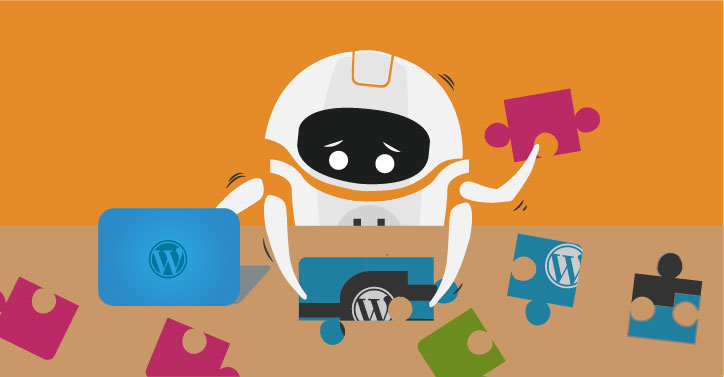


You guys are great. I follow plugin development on many sites but you seem to be the only one showing real data that is actionable. I am finishing my first plugin soon and plan on using Freemius to launch and sell it. Wish I qualified for the credits but I have zero sales of course :)
The analysis make sense. You know, someone like me has no choice but to launch now. I started the project in October so it is now or never.
Hey Jamie, thanks so much for your kind words! It took some time to put together, so I'm glad you found it useful :)
We're here for your product launch and look forward to seeing how it goes! What other sites do you follow plugin development on?
Hi Brandon,
One of the podcasts I like the best is from https://sellingplugins.com/. But unfortunately they have only done about 10 episodes. I am thinking of taking his course, which apparently has a Freemius module.
Jamie